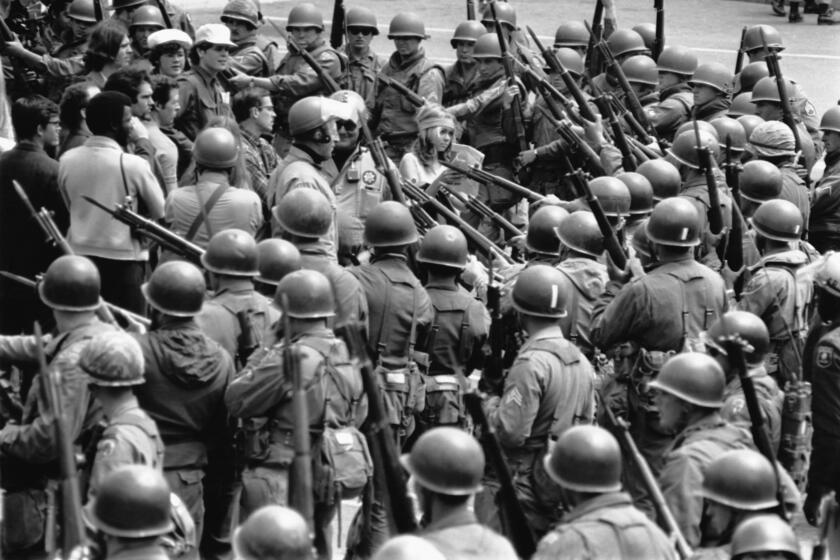Monitoring of Coast Waters Is Questioned
Pollution levels in coastal waters fluctuate so wildly that current monitoring efforts are largely futile, according to a study released Wednesday by a team of Southern California researchers.
Intensive testing of waters off Huntington Beach showed that hot spots of contamination tended to disappear within 100 minutes. But because of the lag time in getting water-sample test results, a beach would be posted as off-limits 24 hours later, long after the pollutants were gone. Yet the posting couldn’t be lifted until another sample tested clean--which takes another 24 hours because of the limits of testing methods.
In practical terms, that means beaches across Southern California and around the nation are regularly being labeled “polluted” and closed when they are clean, researchers said.
But health experts and environmentalists say that despite its flaws, current testing procedures are the best tools they have to protect the public.
In the aftermath of the economically devastating closures of Huntington Beach’s shoreline in 1999, scientists from UC Irvine, Chapman University in Orange and the Orange County Sanitation District analyzed 43 years of water testing data for the city’s beaches and conducted intensive tests over the past year. They concluded that despite widespread public perceptions that coastal waters are becoming increasingly degraded, water quality off Huntington Beach has actually improved over the past four decades.
Much of that improvement is tied to the 1972 Clean Water Act and projects that help keep sewage and urban runoff from hitting the water--from the sanitation district’s construction of a new outfall in 1971 farther offshore to storm-drain diversions in the late 1990s that kept bacteria-laden runoff from hitting the beach.
“Water quality is getting better as money is being spent to improve infrastructure,” said UCI’s Stanley Grant, one of eight authors of the study published Wednesday on the Environmental Science & Technology journal Web site. Grant said this conclusion raised the next question: If water quality is improving, why does it appear to be getting worse?
Numerous studies, including a report by the Natural Resources Defense Council released last month, paint a grim picture. The 12th annual “Testing the Waters” study showed that beach closures and warnings due to pollution were up again across the nation and in the state in 2001. Orange County led the way with 1,592 closures and advisories in 2001--81% higher than the previous year, the NRDC report said.
Grant said the avalanche of new postings and closures was the result of a state law that took effect three years ago, requiring health officials to post warnings on beaches if bacteria levels exceed a specified level in either a single water sample or in several samples over a month. The law, regarded as the most stringent in the nation, was intended to notify the public when the water was unhealthful.
“The postings are an artifact of the new regulations, which wouldn’t be a bad thing if the regulations were doing their job,” he said.
Unfortunately, the lengthy analysis time for water samples brings into question whether the law is doing what was intended.
Using samples collected hourly as well as every 10 minutes, researchers found that pollution levels fluctuate wildly, and individual contamination hot spots tend to last less than 100 minutes. A test that shows a beach is dirty may not be valid two hours later. This “has immediate practical implications for the monitoring ... of coastal pollution,” the study concluded. “Decisions to post or close a beach should not be based on” a single sample that exceeds standards. Instead, closures should be based on multiple samples collected over a period of time.
That conclusion was immediately questioned by environmentalists and O.C. health officials.
“This is a health and safety issue; we want to err on the side of caution,” said Christopher J. Evans, executive director of the Surfrider Foundation. “Even though the [monitoring] isn’t perfect, it is the best we have right now.”
Larry Honeybourne, chief of the county Health Care Agency’s water quality program, said most of his agency’s beach warnings are posted on the basis of a single dirty sample. He conceded that could mean clean beaches are being closed. Such situations, while unfortunate, are necessary, he said. “It’s the most protective of public health.”
Evans noted that a single dirty sample can herald the start of a greater pollution problem, as it did when much of Huntington Beach’s shoreline was closed to the public for most of the summer of 1999. Waiting for multiple dirty samples would have meant allowing people to swim in dangerous water for weeks, he said.
Grant said historical data also showed that the 1999 bacterial pollution problems in Huntington Beach actually had been detected in sampling dating to 1997.
Dave Kiff, Newport Beach’s assistant city manager, said the study confirms what many coastal communities have long feared--that they may be unfairly tarnished by an inaccurate monitoring system. He urged the Legislature and county health officials along California’s 1,100-mile coast to read the report.
UCI’s Grant said researchers across the nation are trying to develop faster testing procedures, but even those would fail to catch minute-by-minute bacterial fluctuations.
More to Read
Start your day right
Sign up for Essential California for news, features and recommendations from the L.A. Times and beyond in your inbox six days a week.
You may occasionally receive promotional content from the Los Angeles Times.







